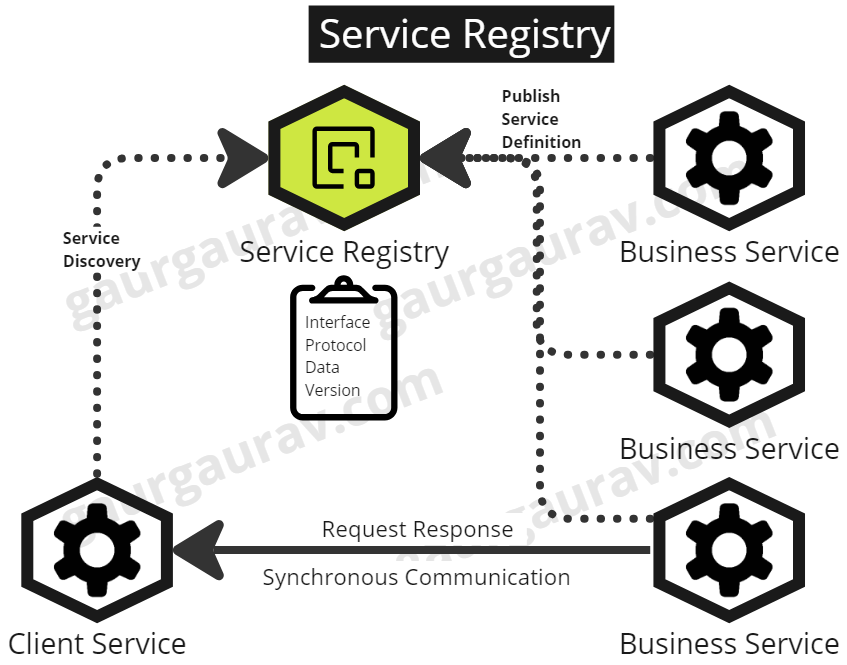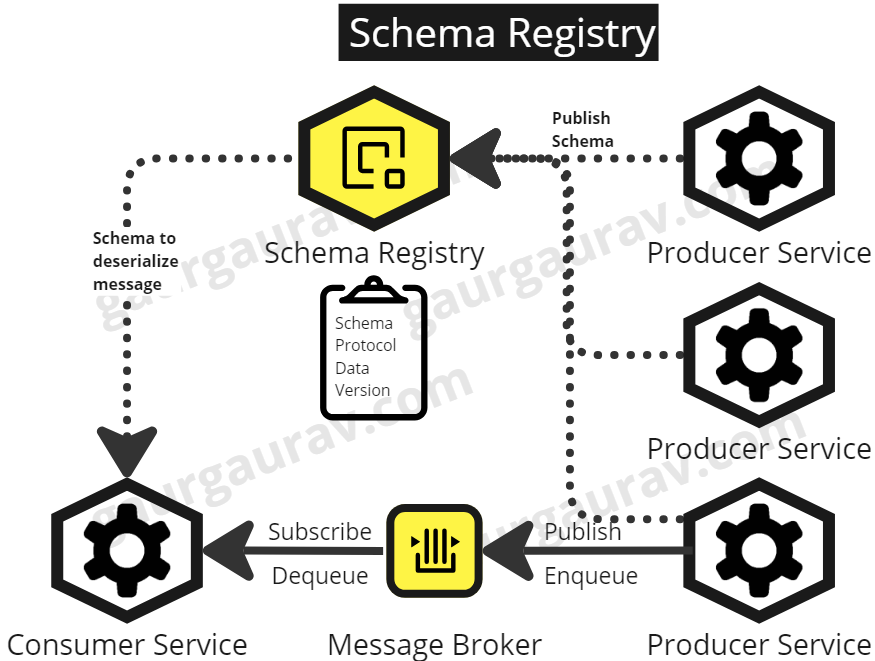Navigating Cloud Native Components: Using Service Registry and Definitions
Explore the Service Registry and Service Definitions, crucial components in cloud-native architecture for efficient, reliable, and scalable applications. It explains their role in synchronous and asynchronous communication.
Introduction
In my previous article, I discussed the communication styles of microservices and serverless components in a cloud-native architecture. We design these cloud services to solve a precise problem. But as the number of services grows, it becomes difficult to find a preferable one. It is similar to a situation where I want a custom-styled costume for a special occasion. I can assemble this dress, but I must find specific boutiques to tailor my style. The challenge of finding an applicable service is like looking for shops on the store locator app.
In this blog, I want to address the above challenge and showcase the use of service registry/discovery and service definitions. I imagine service discovery like an interactive directory that can guide shoppers to the stores. Service definitions function like a detailed store catalogue outlining each service offering. I will explore the role of these components in synchronous and asynchronous cloud communication. Let me first talk about how synchronous communication can use service registry and service definitions to improve the solution.
Synchronous Communication: A Real-Time Interaction
Synchronous communications are like real-world conversations. It can only happen if everyone is available. It involves direct, back-and-forth communication where the client waits for the server to respond before proceeding.
Service Definitions: The Blueprint of Synchronous Communication
Synchronous communication relies on predefined and agreed-upon interfaces. A service definition serves as a contract that outlines how a service provides its functionality. This contract is shared with consumers before establishing communication. Typically, such a contract includes several key elements:
- Service Interface Definition: Lists exposed operations and endpoints with names, parameters, and return values.
- Preferred Communication Protocol: Specifies the communication protocol between services, such as REST, gRPC, or GraphQL.
- Data Exchange Format: Defines the format for exchanging data, which can be specified using JSON, Protobuf (Protocol Buffer), or XML.
- Versioning: Includes a version to guide users in case there are changes in the contract. Service definitions act as living documentation for the service and can help reduce errors during development.
Service Registry: The Centralized Information Hub
As I mentioned earlier, the first step is to find a service that can help to achieve a specific functionality. Developers often do this by asking questions over Slack or in forums. However, this process is inadequate and can be streamlined through a service registry. A service registry maintains a list of available services and stores information such as service name, location (IP and ports), health status, and metadata. This centralized approach helps consumers efficiently find and interact with the services they need in real-time.
 Service Registry to expose Service Definition
Service Registry to expose Service Definition
Guide to Using the Service Registry
Here is a guide to using the service registry:
- Service Registration: When a new service is deployed, it automatically registers itself with the service registry. This process involves essential information like the service name, location, and other relevant metadata.
- Service Discovery: Client applications needing to interact with specific services query the service registry using criteria such as the service name. This allows them to locate the appropriate services dynamically.
- Service Routing: The service registry provides clients with essential information, such as the network address, to connect and invoke the desired service.
- Service Updates: As services scale or change locations, they update their registration information in the service registry. This ensures that clients always connect to the correct service instances.
Service registries work hand in hand with service definitions, forming complementary concepts within synchronous communication. While the registry helps locate services, definitions describe how to interact with them effectively.
Asynchronous Communication: The Flexible Interaction
Unlike synchronous communication, asynchronous communication enables services to communicate without waiting for an immediate response, much like sending an SMS where the recipient can reply at their convenience. This approach fosters decoupling and flexibility within systems.
Schema Definition: The Language of Asynchronous Communication
In asynchronous interactions, service definitions are message formats and protocols. Both the producing and consuming services must speak the same “language” to communicate effectively. This entails comprehending the structure and format of the exchanged messages. The data format follows a specific structure defined by a common schema. Since communication occurs asynchronously through a message broker or event bus, the producer ensures that it publishes data according to the agreed-upon schema, facilitating processing by the consumer.
Schema Registry: The Centralized Schema Storage
Like services in synchronous messaging, this shared messaging contract must be easily discoverable. To achieve this, producer and consumer services utilize a centralized metadata registry to store the schemas. Let’s dive deep into the schema registry process guide.
 Schema Registry to expose Schema Definition
Schema Registry to expose Schema Definition
Guide to Using the Schema Registry
- Schema Definition: When a new service is deployed, it defines the message schemas using a preferred format like Apache Avro, Protocol Buffers, or JSON Schema. This schema defines the structure of the messages, including the data types of fields.
- Schema Registration: The producer registers the schema with the schema registry. This usually involves providing the schema definition and a unique identifier to the registry. The registry may offer versioning capabilities to track changes.
- Message Production: When the producer service needs to send a message, it:
- Fetches the relevant schema from the registry (if not already cached).
- Validates the message data against the schema to ensure it complies with the expected format.
- Serializes the message using the chosen format (e.g., Avro serialization).
- Publishes the serialized message to the message broker or event bus.
- Message Consumption: On the receiving end, the consumer service:
- Subscribes to the relevant topic or queue in the message broker.
- Fetches the schema for the expected messages from the registry (if not already cached).
- Desterilizes the received message based on the fetched schema.
- Processes the data according to its internal logic.
The schema registry ensures that producers and consumers use compatible message formats, even as schemas evolve. This compatibility is crucial in cloud native distributed systems where different services may be developed and updated independently.
Conclusion
By adopting these Service Definition Patterns, developers can build cloud-native applications that are not only efficient and reliable but also maintainable and scalable. The service definition and how to share that definition with the rest of the organization is tightly coupled to the overall governance aspects of building cloud-native applications. Therefore, adopting schemas in asynchronous messaging is vital for ensuring the reliability and safety of cloud-native applications.

